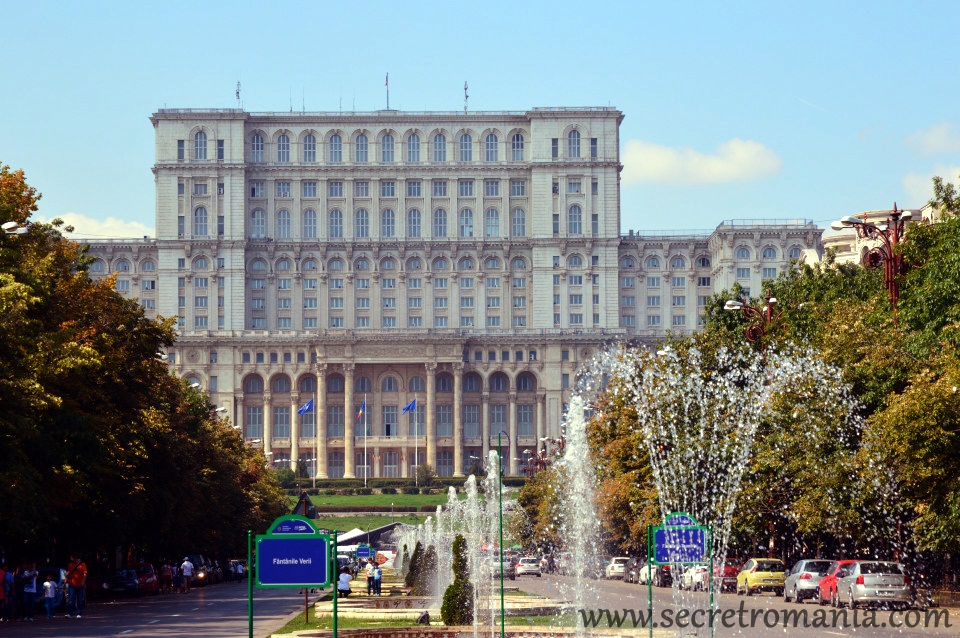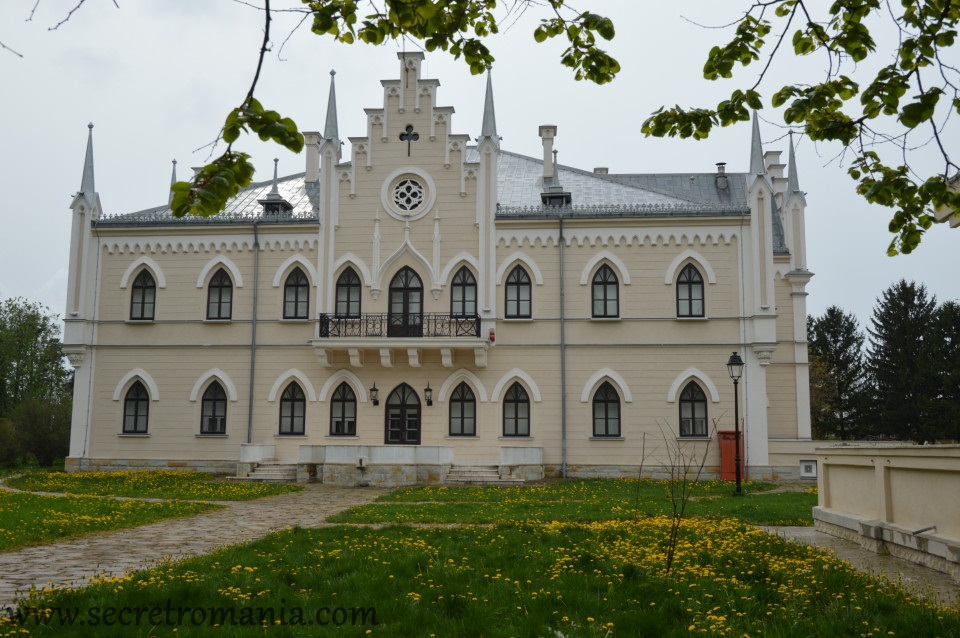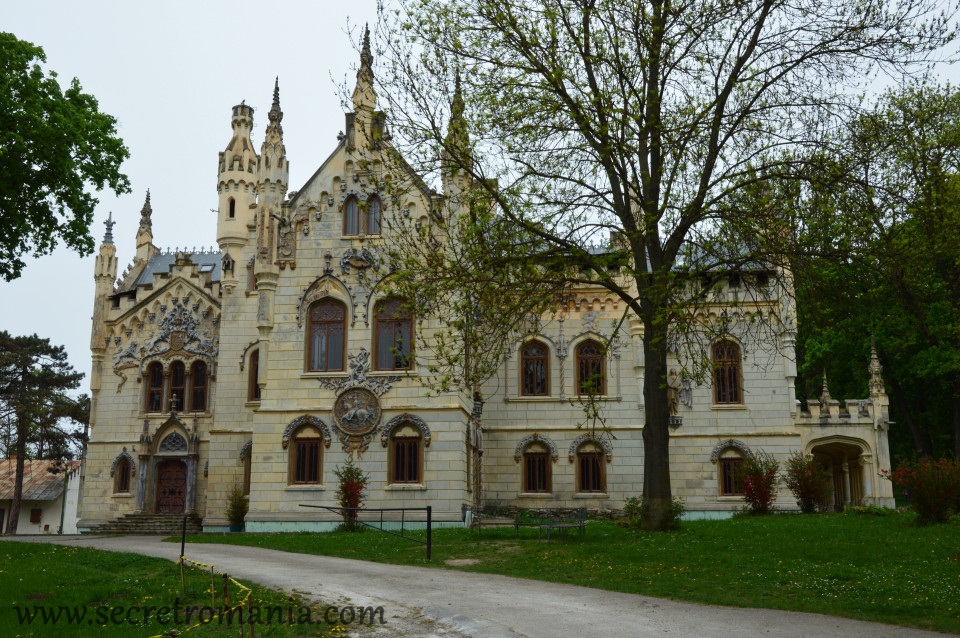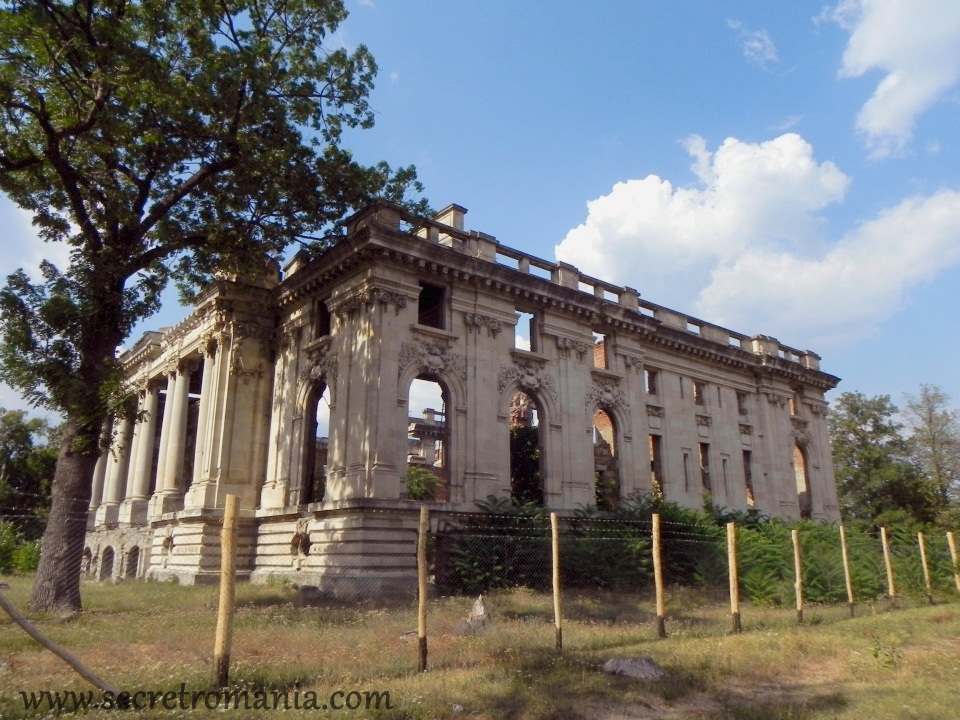There are only 2 or 3 famous palaces in Romania, but few people know that Romania has a legacy of over 1300 castles, palaces, mansions and fortresses built by our ancestors.
You can visit some of them, but unfortunately, some are just ruins, also very exciting to explore.
The castle is a fortified building. There are many types of fortifications built for defense, but a castle is used especially as a residence. In medieval times, castles were usually occupied by a lord, a knight or a monarch.
The palace is an imposing building that designates an urban residence of an important person, most often of noble origin, with a lavish way of life. It may also designate the seat of a public institution in which power is exercised (political, judicial, legislative, executive). A palace is built with the intention of having spacious halls and rooms designed primarily for comfort. Decoration is the primary intention when it comes to building a palace.
Among these 1300 pieces of history, I only chose 10 beautiful palaces in Romania to recommend you for a visit. Here, you can find a list of beautiful castles to visit in Romania.
Romanian palaces are many, but the best-known and beautiful ones are:
Palace of Parliament in Bucharest – People’s palace Romania

Built in Bucharest by Ceausescu, the Palace of Parliament is the second-largest building in the world and the heaviest. It is surrounded by dark legends and probably one of the reasons why Bucharest seems grey sometimes.
And after the revolution in 1989, it became known as Casa Poporului (People’s house). An Australian businessman wanted to buy the building for the US $1 billion, but his offer was rejected.
The Palace of the Parliament in Bucharest is valued at €3 billion ($3.4 billion). And that makes it the most expensive administrative building in the world.
Although it cost and costs enormously, 70% is unused, most of it not being structured for the needs of individuals but for Ceaușescu’s megalomaniac desires.
In 1983, the construction of the “People’s House” began, but the official ceremony of laying the foundation stone took place on June 25, 1984.
The building has an area of 330,000 m2, being the 2nd largest in the world after the Pentagon in terms of administrative buildings.
In terms of volume, it was ranked 3rd in the world, after the space rocket assembly building at Cape Canaveral in Florida and after the pyramid of Quetzalcoatl in Mexico. It is 2% larger than the volume of the pyramid of Cheops in Egypt.
Started during the communist regime, the so-called Bucharest Project was an ambitious project of the Ceausescu couple started in 1978, as a replica of the city of Phenian, the capital of North Korea.
After the 1977 earthquake, Nicolae Ceaușescu ordered the “reconstruction” of Bucharest as a new city.
The construction site itself began in the 1980s with the demolition of over 7 km² of the old centre of the capital and the relocation of over 40,000 people in this area.
The building has about 1000 rooms, of which 440 offices, over 30 halls and lounges, four restaurants, three libraries, two underground parking lots, a concert hall.
The Chamber of Deputies has been operating in the building since 1994. Since 2004, the Romanian Senate also moved here.
In the period 2003-2004, a glass annexe was built along with the exterior elevators. This construction aims to facilitate access to the National Museum of Contemporary Art (MNAC), which opened in 2004, after redevelopment in the western wing of the palace.
You can visit it if you book our Bucharest city tour.
Palace of culture in Iasi

The Palace of culture is the symbol of Iasi. The building served as Administrative and Justice Palace until 1955.
Then, it became the host for the four museums nowadays united under the name of Moldavia National Museum Complex. Also, the building houses the Cultural Heritage Conservation-Restoration Centre and hosts various exhibitions and other events.
The Palace has 298 large rooms. The entrance of the palace is through a great tower, the central architectural piece of the palace. On each of the three exposed sides, there is a face of the clock with a diameter of 3.25 m.
You can read more of the history of this impressive building and what you can see inside on their website.
Cuza palace in Ruginoasa

You can find Cuza palace in Ruginoasa, Iasi county. It is the palace of a former Romanian ruler, Alexandru Ioan Cuza, the first prince of the United Romanian Principalities.
He bought it in 1862, renovated and used it as a summer residence. His wife, Elena Cuza, lived here with her husband’s two illegitimate sons.
The palace of the ruler Alexandru Ioan Cuza from Ruginoasa is a palace built in neo-Gothic style in 1804, which originally belonged to the Sturdza family.
Although the ruler spent some time at the palace, his wife, Mrs Elena Cuza (1825-1909), lived here and took care of furnishing and decorating the rooms and the garden.
The central staircase was built of marble, the walls were wallpapered with silk from Paris, fireplaces were built and expensive polycandres were brought. Mrs Elena Cuza ordered the pieces of furniture from a company in Paris.
The Ruginoasa Palace was officially inaugurated by Prince Cuza, on the occasion of the Easter holidays in April 1864.
The former ruler died in 1873 in the city of Heidelberg (Germany), and his remains were brought to Ruginoasa, according to his last wish, being buried in a tomb arranged next to the church.
The palace was severely damaged by nearby fighting during World War II, leaving only a few enclosure walls and ruined pieces of walls.
The complex from Ruginoasa was restored between 1967-1978, being rebuilt the palace itself, part of the enclosure wall and only a bastion in the northwest.
The ground floor of the palace contains exhibits that reconstruct the life and activity of Prince Al. I. Cuza.
The museographers tried to arrange the floor of the palace to bring it to the appearance of Cuza’s time.
Antique furniture, antique books, silverware were brought. Some of the oak pieces of furniture were brought to the office, which Elena Cuza ordered from the famous Parisian company P.P. Mazaroz Ribaillier.
Today, Cuza palace in Ruginoasa hosts the Museum Alexandru Ioan Cuza. And you can visit its beautiful interiors restored after the original plans.
Sturza palace in Miclauseni

Sturza palace is a historic monument in the village of Miclăușeni, near Iasi. It is part of the Miclăușeni Historic Monastery complex in Miclauseni.
The actual Sturdza Palace is a neo-Gothic castle erected between 1880-1904 by Gheorghe Sturza and his wife Maria, in the village of Miclăușeni, at a distance of 20 km from Roman and 65 km from Iași. It is currently owned by the Metropolitan Church of Moldova and Bukovina.
The ensemble consists of 3 monuments: “Holy Voivodes” Church, “Annunciation” – dating from 1787, Sturza Palace and the park – dating from the nineteenth century.
Between 1880 and 1904, George Sturdza built on the site of an old mansion a beautiful late neo-Gothic palace, a copy of the western feudal castles.
During World War I, the palace housed a military hospital, and his heirs helped the wounded as nurses. The great composer George Enescu visited the castle, performing among the beds with the wounded.
Today, you can visit the palace and the monastery, but they have a strict schedule for visits.
Palaces near Bucharest: Mogosoaia palace

Mogosoaia palace it is near Bucharest so it is ideal for a half-day trip outside Bucharest. It was built between 1698-1702 by Constantin Brancoveanu in what is called the Romanian Renaissance style or Brancovenesc style.
The name of the palace, Mogosoaia comes from the name of the widow of the Romanian boyar Mogoș. He owned the land it was built on.
In 18 century, after Constantin Brancoveanu was executed with his entire family, the palace was converted into an inn. It became a museum in 1957.
The Mogoșoaia Palace was in the possession of the Brâncoveanu family for about 119 years, then became the property of the Bibescu family.
The complex contains the building itself, its courtyard with the watchtower, the cuhnia (kitchen), the guest house, the glacier and the tomb of the Bibescu family, as well as the “Sfântul Gheorghe” church located near the courtyard walls.
Currently, Mogoșoaia Palace houses the Brâncovenească Art Museum and is an important tourist attraction.
The Mogosoaia palace has also a beautiful garden and other old buildings nearby. It is a popular location for weddings and also for families. You can explore it during a road trip in Romania.
Palaces in Sibiu: Brukental museum

Brukental palace lies in the centre of Sibiu and today is an art museum. The museum is housed in the palace of Samuel von Brukenthal, Habsburg governor of Transylvania.
Brukenthal Palace in Sibiu is a palace built between 1778–1788 in the city of Sibiu by Baron Samuel von Brukenthal, governor of the Grand Principality of Transylvania (1777-1787).
The Baron also had a summer residence, the Brukenthal Palace in Avrig, whose construction had begun in 1760.
The palace in the centre of Sibiu was erected in stages, in order to be the official residence of Baron von Brukenthal and the headquarters of his collections.
The entrance is decorated with the golden coat of arms of Samuel von Brukenthal and other decorative elements specific to the Baroque style: urns and rosettes.
The Baron established his first collections around 1790. And they were officially opened to the public in 1817, making it the oldest museum in Romania.
You can read more about the collections and the schedule of the Brukental museum in Sibiu on its website.
Cantacuzino Palace in Bucharest

Cantacuzino palace from Bucharest is located on Calea Victoriei and it is built in French Baroque/Art Nouveau style.
Today it is the George Enescu museum and remains one of the most beautiful buildings in Bucharest.
Built by Gheorghe Grigore Cantacuzino, mayor of Bucharest and inherited by his daughter in law, Maria, the building hides dark love stories. Maria remarried music composer George Enescu and they left behind the palace, in a modest house that can be visited today.
The Cantacuzino palace became the George Enescu Museum in 1959 and you can find its whole story in our Bucharest city tour.
The royal palace in Bucharest

The largest and most significant royal residence in the country, the Royal Palace in Bucharest served as the official residence for the Kings of Romania until 1947.
Three years later became the National Museum of Art and today hosts several important collections. In the beginning, it was a large mansion and when Carol I was invited to become the first king of Romania, he started to enlarge the building.
The royal palace in Bucharest suffered major fires and it was partially destroyed during the Revolution in 1989. But every time the palace was renovated and came back to life!
Roznovanu palace

Roznovanu palace in Iasi is the former residence of the Rosetti-Roznovanu family. After his inauguration in 1832, it was considered the most beautiful building in Iasi.
In 1891 it was bought from the Roznovanu family and became the headquarters of the City Hall. Today it is still the City hall of Iasi, so you cannot visit it. But you can admire it from the outside.
Little trianon palace in Floresti

Cantacuzino palace in Floresti Prahova belonged also to Gheorghe Grigore Cantacuzino, the one that owned Cantacuzino palace in Bucharest. The one in Floresti was built after the plans of Versaille palace in Paris and it is called Petit Trianon. Micul trianon palace in Floresti is only a ruin today, but you can admire it from outside.
The palaces in Romania are reminiscences of the past and all of them have many stories behind them. You cannot live those times, but you can feel the fragrance of other ages when you visit them. Try our tours in Romania and visit the palaces you like.

